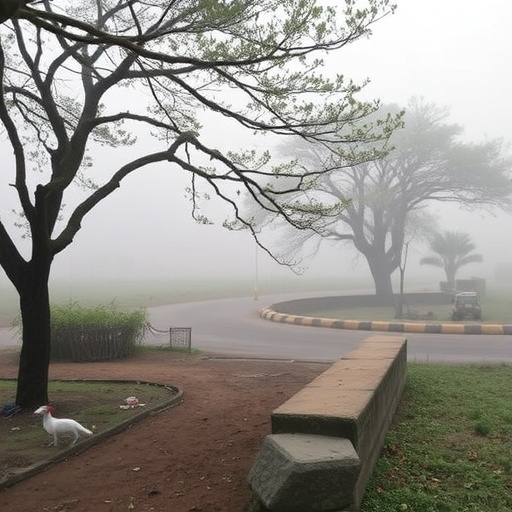Air pollution is a looming crisis that continues to plague urban environments around the world, with megacities facing some of the most daunting challenges. A recent study has shed light on the interconnection between land use, vegetation indices, and seasonal variability regarding air pollutant concentrations, specifically focusing on Delhi, India. This research highlights the multifaceted relationships between natural and human-made environments and their roles in shaping air quality.
Delhi, as one of the largest megacities globally, is characterized by a rapidly growing population and urban sprawl that exerts immense pressure on its environment. Urbanization has dramatically altered the landscape over recent decades. By disproportionately increasing impervious surfaces such as roads and buildings, urban development has fundamentally impacted local ecology, specifically vegetation cover. The researchers, A. Rani and M. Kumar, delve into how these changes correlate with heightened levels of air pollutants in the capital.
The study meticulously examines land-use patterns, which are critical in understanding the sources and concentrations of various air pollutants. Specifically, it categorizes urban land use into various types such as residential, industrial, and commercial, thereby allowing a layered analysis of how each category contributes to air pollution differently. The researchers emphasize that industrial areas are major contributors, often releasing noxious emissions into the atmosphere, while residential zones may exhibit another unique set of challenges mainly related to domestic activities.
Moreover, the role of vegetation in mitigating air pollution cannot be overstated. Vegetation indices, such as the Normalized Difference Vegetation Index (NDVI), serve as valuable indicators of plant health and biomass. Healthy green spaces can absorb pollutants and particulate matter, acting as natural air filters. The study employs satellite imagery and remote sensing technology to quantify vegetation cover across different areas of Delhi, uncovering correlations between densely vegetated zones and lower levels of pollution.
Seasonal variability adds another layer of complexity to the air quality equation. Delhi experiences distinct seasonal changes, heavily influenced by climatic factors such as monsoon rains and winter smog. The researchers analyze pollution levels across these seasons, noting how episodic changes in temperature and precipitation can lead to spikes in pollutant concentrations during certain periods, particularly during the winter months when temperature inversions trap air pollution near the surface.
The implications of the study are profound, advocating for a reexamination of urban planning policy in Delhi. A strategic approach to land use that prioritizes green infrastructure could substantially yield benefits for air quality while simultaneously promoting biodiversity. Expanding green spaces, creating urban forests, and integrating nature-based solutions could align urban development with environmental sustainability objectives.
Furthermore, the research highlights the need for public awareness and engagement on air quality issues. It calls for initiatives that involve local communities in afforestation and conservation efforts to increase vegetation cover. The researchers assert that community-driven initiatives could enhance local ecosystems, leading to a healthier urban atmosphere for Delhi’s residents.
The study also points to the significance of policy interventions in managing air quality. Governmental regulations that limit emissions from industries and vehicles must be strengthened and strictly enforced. The researchers underscore that while technological advancements offer solutions, societal change and governmental accountability are equally crucial in addressing this vital public health issue.
Beyond India, the findings have global relevance, suggesting that cities around the world can learn from Delhi’s experiences. Rapid urbanization is not unique to Delhi; many cities face analogous challenges. As such, implementing evidence-based strategies on a global scale could bring about substantial improvements in air quality.
In conclusion, the study by Rani and Kumar serves as a crucial reminder of the interconnectedness of land use, vegetation, and seasonal dynamics in the fight against air pollution. It lays the groundwork for future research that could delve into specific interventions and models for progressively cleaner air in urban environments. A comprehensive approach incorporating ecological insights and community action will be vital for sustainable urban futures.
Subject of Research: The impact of land use, vegetation index, and seasonal variability on air pollutant concentrations in Delhi, India.
Article Title: Investigating the impact of land use, vegetation index, and seasonal variability on air pollutant concentrations in the megacity Delhi, India.
Article References:
Rani, A., Kumar, M. Investigating the impact of land use, vegetation index, and seasonal variability on air pollutant concentrations in the megacity Delhi, India.
Environ Monit Assess 197, 1274 (2025). https://doi.org/10.1007/s10661-025-14674-3
Image Credits: AI Generated
DOI:
Keywords: air pollution, megacity, land use, vegetation index, seasonal variability, Delhi, environmental sustainability.




